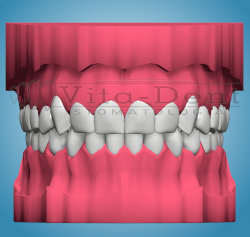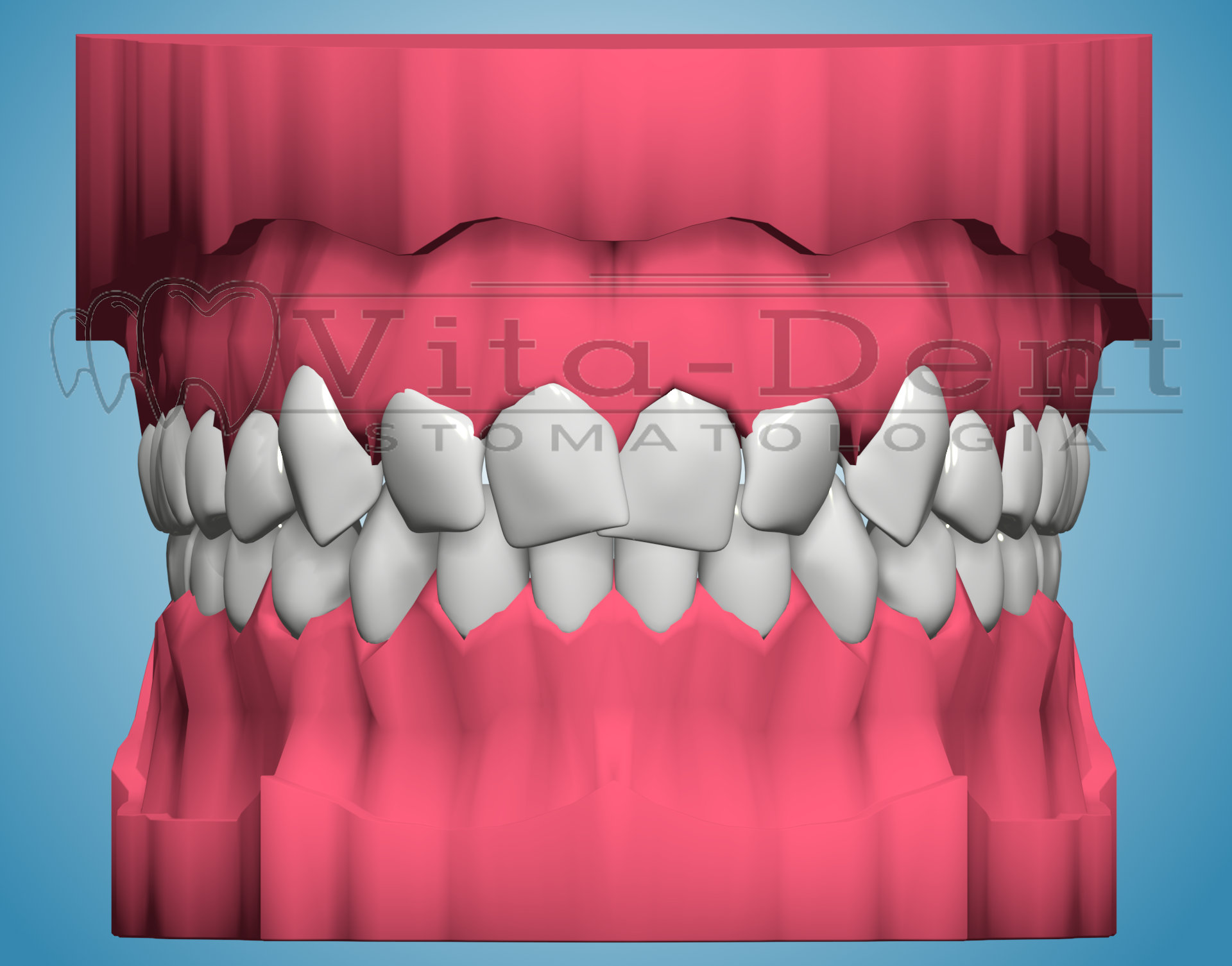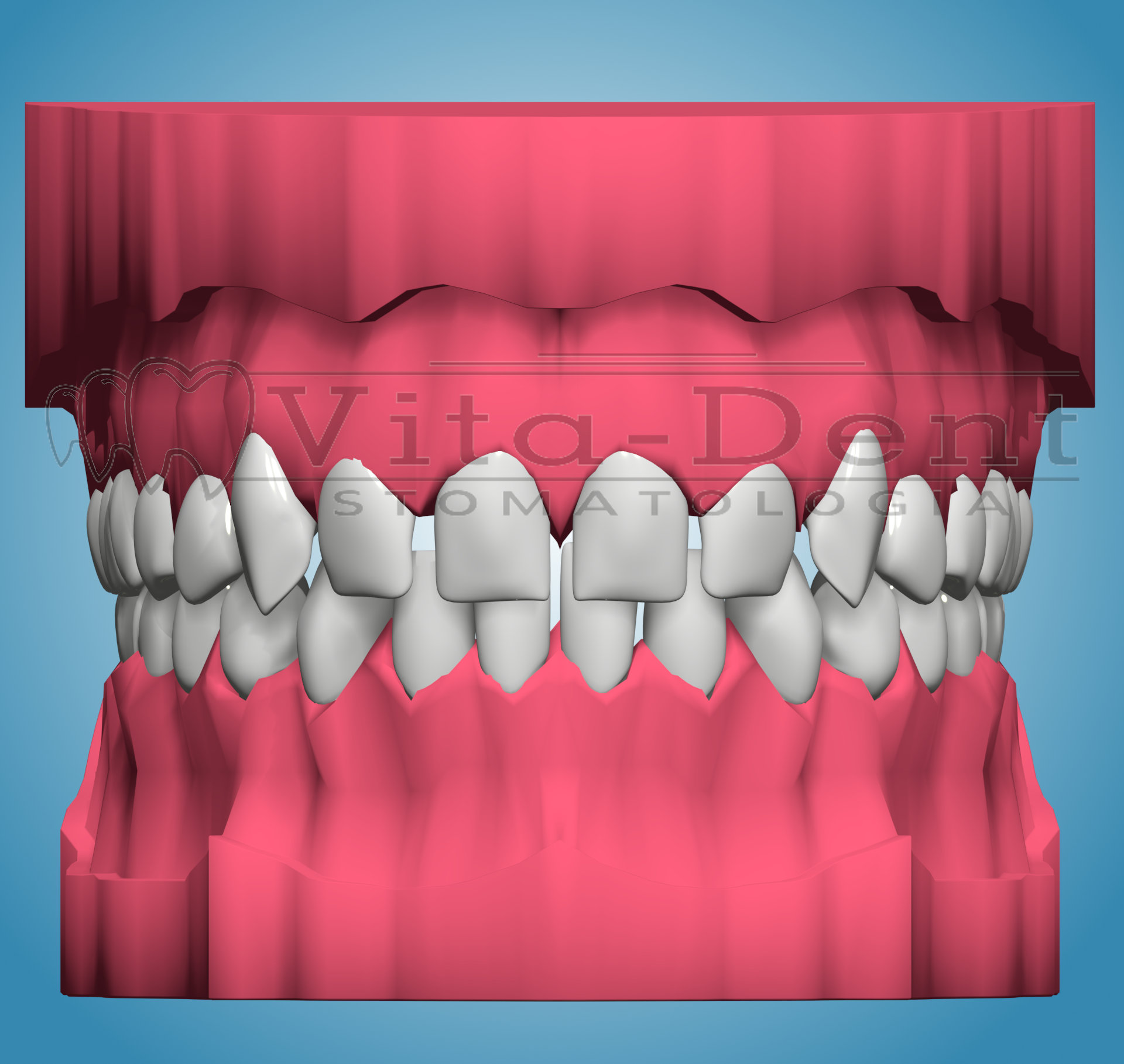Horizontal bite defects – 1rd class by. Angle'a
Setting the first shank teeth (sixes) lower and upper in the correct relationship indicates the so-called " I class according to Edward Angle's classification. Unfortunately, the correct setting of the jaw and mandible stems does not guarantee the correct setting of the remaining teeth.
Fortunately, in many cases, patients with orthodontic defects and first class Angle are eligible for treatment with little complexity and a short time.
Rip — Engle's 1rd Class
Orthodontic patients with class I according to Angle'a are characterized by…
- In the anterior jaw of the jaw there is often crowding of teeth, caused by insufficient bone in relation to the size of the teeth.
- Another problem in patients with Angle's first class is tooth separity, which is caused by excessive amounts of bones in relation to the size of the teeth, that is, the opposite situation to the described above.
- Angle's classification describes dental relationships very well, but does not take into account soft tissues, the assessments of which are most often carried out by looking at the patient's profile. When there is an excessive tilt of the upper and lower teeth, we are talking about protrusion. This defect, manifested by too much lip tilt and a convex profile.
- The opposite situation to this point described in the above paragraph can be observed in patients with tilted teeth (inward). The profile in such patients will be concave, and the lips insufficiently visible.
Faqs:
- Is it necessary to remove teeth during orthodontic treatment? No, usually during orthodontic treatment the aim is to position the teeth in a way that preserves all the teeth. In most situations, it is possible to treat extra-dissintentiously, but it all depends on the individual situation of the patient.
- Can the elderly also undergo orthodontic treatment? Yes, the progress that has been made in orthodontics over the past decades has allowed for effective and lasting orthodontic therapy regardless of age. The best proof of the effectiveness of treatment are elderly patients who undergo orthodontic treatment for prosthetic reasons – in their case, before using bridges or crowns , the teeth should be set in the right position, which allows to achieve high aesthetics and a lasting effect of prosthetic reconstructions.


